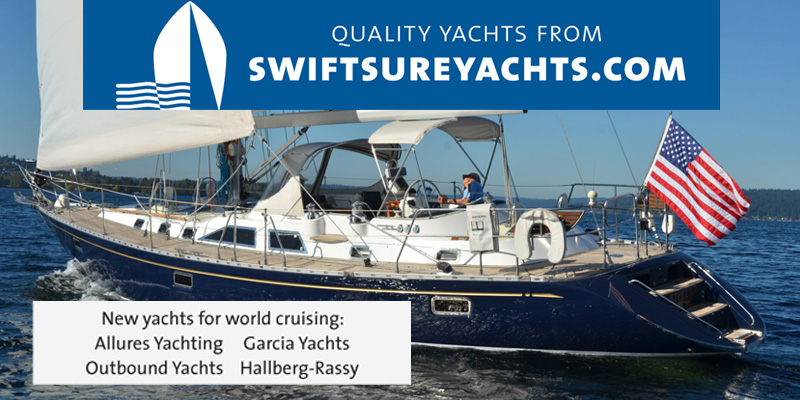
- Weather
- West Coast Sailing
- General Sailing
- Commentary
- Racing
- Northern California Racing
- Current News
- Events
- Safety
Tonga Reminds Us, Never Turn Your Back on a Tsunami
We awoke Saturday morning to get ready for the Corinthian Yacht Club Midwinters with a pleasant forecast of partly sunny, strong ebb, light winds and — oh yeah — a tsunami. What? While it’s easy to shrug off these warnings, we remember how the Fukushima tsunami in 2011 left most of the West Coast unharmed; however, it had very significant impacts on certain harbors depending on the local geography.
We drove down to Tiburon at 9 a.m. and had to get into the lefthand lane by the Cove Shopping Center to avoid the high water that often comes through the storm drain during king tides. When we reached downtown Tiburon, we did notice there wasn’t any of the flooding that occurs near the post office during king tides. Huh? It was one of the few effects we think we saw from the tsunami. The video below shows the water rushing through the Cove apartments at the head of Richardson Bay, which would have been happening right about the time we drove by, and was the likely source of the water flooding Tiburon Blvd.
Scary moments for neighbors in Tiburon after #tsunami surge rips boat dock from building, casting it adrift. @LiveDoppler7 pic.twitter.com/2qCO46kIHE
— Cornell Barnard (@CornellBarnard) January 15, 2022
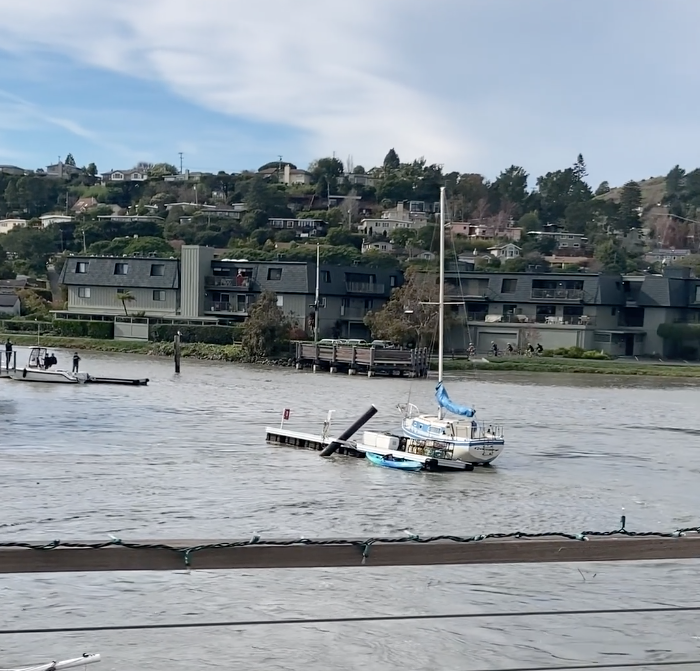
When we arrived at the Corinthian Yacht Club all was calm. Seeing the video above demonstrated the difference that can occur when the fickle finger of fate selects your location to bear the brunt of the impact. 99% of the coast received insignificant impact from the tsunami, but the surge did zero in on some particular harbors causing damage to boats, piers and docks. Below, the normally sleepy Soquel Creek had a raging current going ‘uphill’ as the tsunami washed inland.
Soquel Creek in Santa Cruz flowing *backwards* because of a tsunami ? pic.twitter.com/JxFsllhhdX
— robwormald (@robwormald) January 15, 2022
In Berkeley, the liveaboards were evacuated from boats and floating homes — Berkeley Marina did experience some damage during the Fukushima tsunami. “I went down to the marina at around 1 p.m. on Saturday and nothing seemed amiss,” reports Baylis Weaver, who keeps a large sailboat on K Dock.
Santa Cruz was not so lucky. KCBS Radio reported this morning that Santa Cruz Harbor has “hundreds of thousands” of dollars’ worth of damage. The power is back on in the lower harbor, but the North Harbor is still (as of 8:30-ish) without power and water, and two docks remain closed. Boats that float fared better than cars that don’t in Santa Cruz.
The scene at the Santa Cruz Harbor as a tsunami generated tidal surge causing damage Saturday morning #TsunamiAdvisory pic.twitter.com/9ijKU9ZVaK
— Vern Fisher (@VFisher45) January 15, 2022
At the CYC Midwinters, the day’s concerns shifted to dealing with light breezes and a big ebb. A fleet of 75 boats signed up to do battle in what turned out to be a very pleasant sailing weekend. Aboard our Sabre 38 Finistere we experienced a few large, unusual swells going east to west that we thought might have been reflective tsunami effects. We also felt the ebb and current lines were much stronger and more pronounced on Saturday than on Sunday.
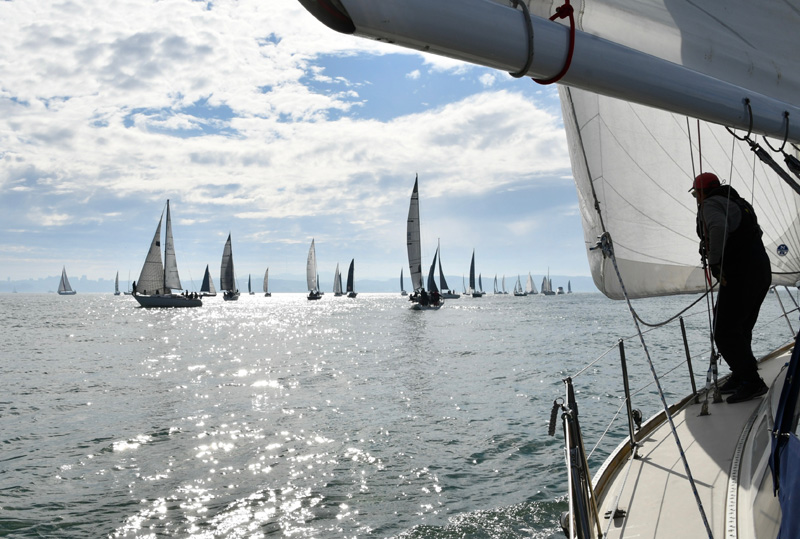
Fortunately, the light breezes were just strong enough to allow boats to overcome the ebb and make their way around a variety of courses. Numerous recreational sailors also dotted the Bay. See results from two very enjoyable days of racing here. We’ll have more in Racing Sheet in the February issue of Latitude 38.
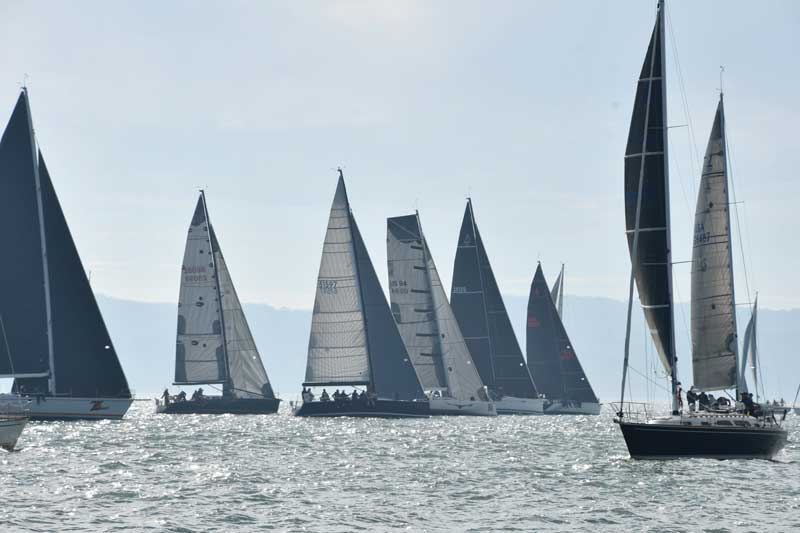
The drama in Tonga sounds significant and is still unfolding. Here on the West Coast most of us were fortunate to wake up Saturday morning feeling unthreatened by the volcano-generated tsunami created some 5,300 miles away. However, the pinpoint damage at certain harbors and docks is a reminder that you should never turn your back on a tsunami.
Women Crush Wednesday, on a Monday
Last September we shared our first Women Crush Wednesday #wcw story. Our plan was to make this a regular feature, but there are just so many outstanding women out there that we were befuddled about whom to feature next. Actually, the truth is, we got busy and forgot. But new year, new plan!
This month we’re sharing a very short post. January’s #wcw celebrity is Laura Brazil from Petaluma. Laura and her husband Rich are passionate sailors and Baja Ha-Ha vets who spend as much time as they can sailing in Mexico. Right now they are in Puerto Vallarta preparing their 1987 Nauticat 43, Tally Ho, for a sail to Barra de Navidad.
Laura is not one to sit back and let the boys do all the dirty jobs. She gets right in there, literally, and does her share of the cleaning and fixing.
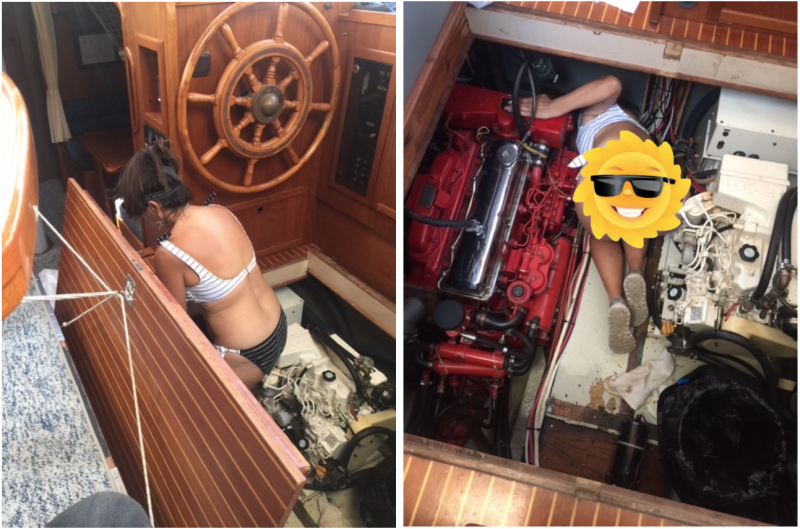
Fellow Petaluma Yacht Club members Sal Toramina and Kristy and John McDill will join Tally Ho for the passage south. Here’s their sailing itinerary.
“The trip will start with a daysail from Paradise Village Marina to Yelapa, where we will enjoy the funkiness of this quaint village for a day and a half. An overnight sail to Chamela, where we’ll anchor out for a day or two, followed by another daysail to Tenacatita Bay, where we’ll stay a couple of days. Next, the short hop to Barra, where Tally Ho will be marina boat neighbors with our good friends Monique and John Schulthess of the Lagoon 44 Baja Fog. We hope to sail the area for a season before heading south to Zihuatanejo next spring for Guitar Fest.”
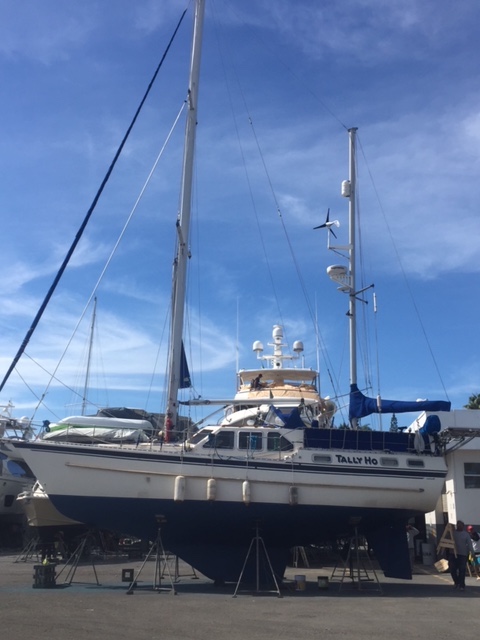
As Rich retired on December 30, 2021, the couple now has plans for longer voyages, including an exploration of the Sea of Cortez.
Swiftsure Yachts: Serving the West Coast
In the San Francisco Bay Area, contact Swiftsure Yachts broker Allison Lehman at 510.912.5800 or [email protected].
Swiftsure serves the West Coast from Seattle and four other waterfronts.
Boat of the Month: The Millimeter
In the January issue of Latitude 38 Ros de Vries checks out the Millimeter.
In the 170 years of America’s Cup racing, perhaps no other class of boat has stirred the sailing fanatic’s blood more than the 12 Meter. I loved watching the 1980s-era races — especially when the gigantic spinnakers were hoisted and doused with unimaginable athleticism by guys whose definition of technical wear was a pair of skimpy shorts. 12 Meters are big boats that demand big teams and big money to operate — but are still relatable enough in their operation that small-time sailors like myself can aspire to sail one — well, no. We can simply dream.
Now, imagine that 70 feet of grandeur scaled down to 12-ft 6 inches in length. Now it all sounds more manageable, doesn’t it?
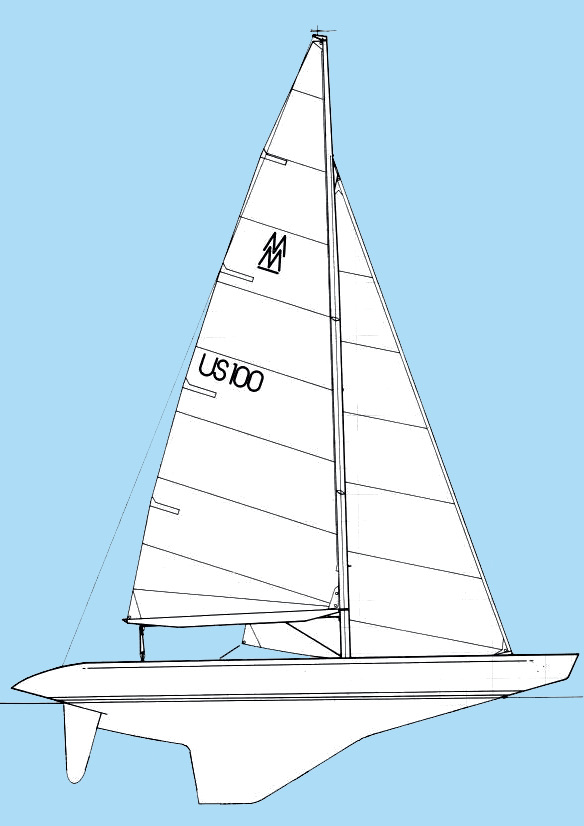
LOA – 12.5′; Beam – 3′; Draft – 2.33′; Displ. – 430 lbs; Ballast – 69.77 lbs; Sail Area – 60 sq ft.
The Millimeter is a one-design, one-person, single-hull racing yacht, related to the Mini-12 and the slightly longer International 2.4mR. She is a Bay Area legend, with an origin story circa 1982, when Sven Svendsen imported a 12-ft boat from Germany and put it on display at a boat show just south of San Francisco. Jim Taylor, who would become the originator and promoter of the class, recounted that he had never seen anything like it: an America’s Cup simulacrum in many aspects, albeit one that you steered with your feet. He and everybody with him were very excited, and all took turns sitting in this Mini-12 and sailing it on its stand. When Taylor declared, “Svendsen, we all want one of these; make us a deal on a bunch of them!” Sven let him know in plain terms they were $4,250 each, regardless of how many were imported. This got Taylor thinking about how he could build a better, cheaper, more fun mini. At the time, he lived with Bob Smith, a burgeoning naval architect. Bob and Jim spent the next few weeks talking about what was right and wrong with the German design: To start with, it was a bit small, the hardware was cheap, and the rudder seemed tiny. But overall, the boat was very cool.
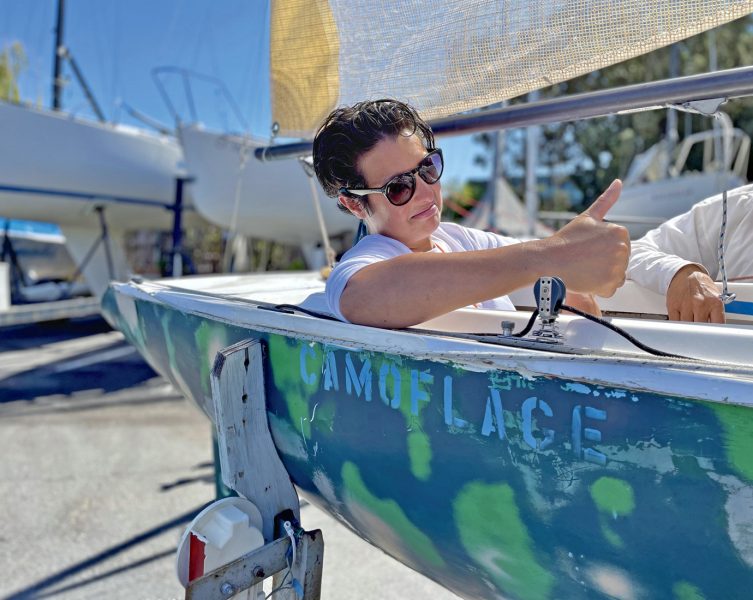
US Sailing Advanced Race Management Seminar
“Area G leaders, interested in learning more about race management? Renewing your race officer certification? Taking the test toward certification for Club, Regional…?” inquires Peggy Lidster, US Sailing Area G representative. (US Sailing is divided geographically into 11 Areas; Northern California and most of Nevada comprise Area G.)
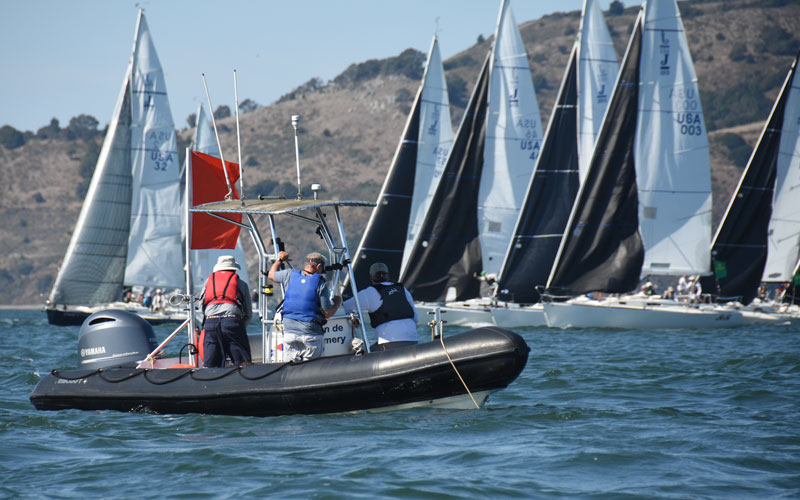
St. Francis Yacht Club on the San Francisco Marina will host an in-person, two-day US Sailing Advanced Race Management seminar on February 5-6 from 9 a.m. to 4 p.m. Registration will close on January 26. Instructors will be John Siegel and Thomas Duggan.
This seminar fulfills the requirement for recertification and offers the opportunity to take the Advanced Race Officer Test after the final session. Students will have three weeks to complete it.
US Sailing has a list of materials to gather before the first session. They’ll also ask registrants to complete a few short quizzes and activities before the first session that review the study questions and other topics. Registrants will find these assignments in Canvas, US Sailing’s online learning platform. The organizer and/or lead instructor will email students with additional course information and links approximately 10 days before the seminar begins. Be sure to download the new Racing Rules app at: www.ussailing.org/competition/rules-officiating/the-racing-rules-of-sailing-2021-2024/#the-rules.
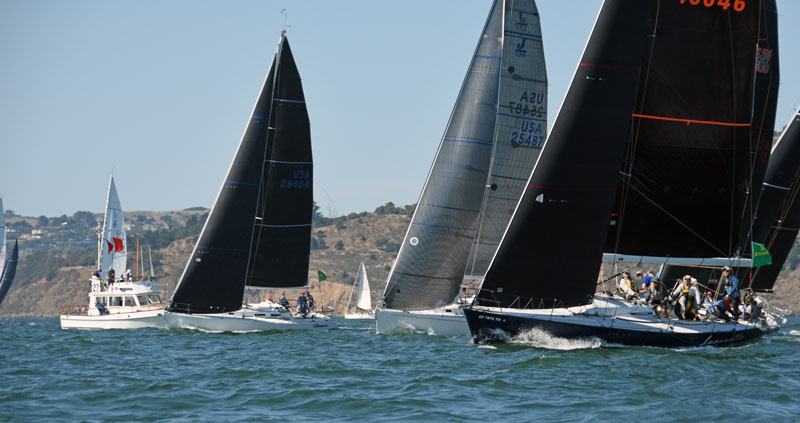
The US Sailing registration fee is $38. An additional course fee of $45 must be paid to Grace Carrick at StFYC no later than February 2. Please call (415) 655-7756 with credit card info. Walk-In registration is not allowed. Attendees can purchase lunch via StFYC member number or guest card for non-members.
Everyone entering StFYC’s clubhouse must be fully vaccinated and comply with COVID guidelines.

